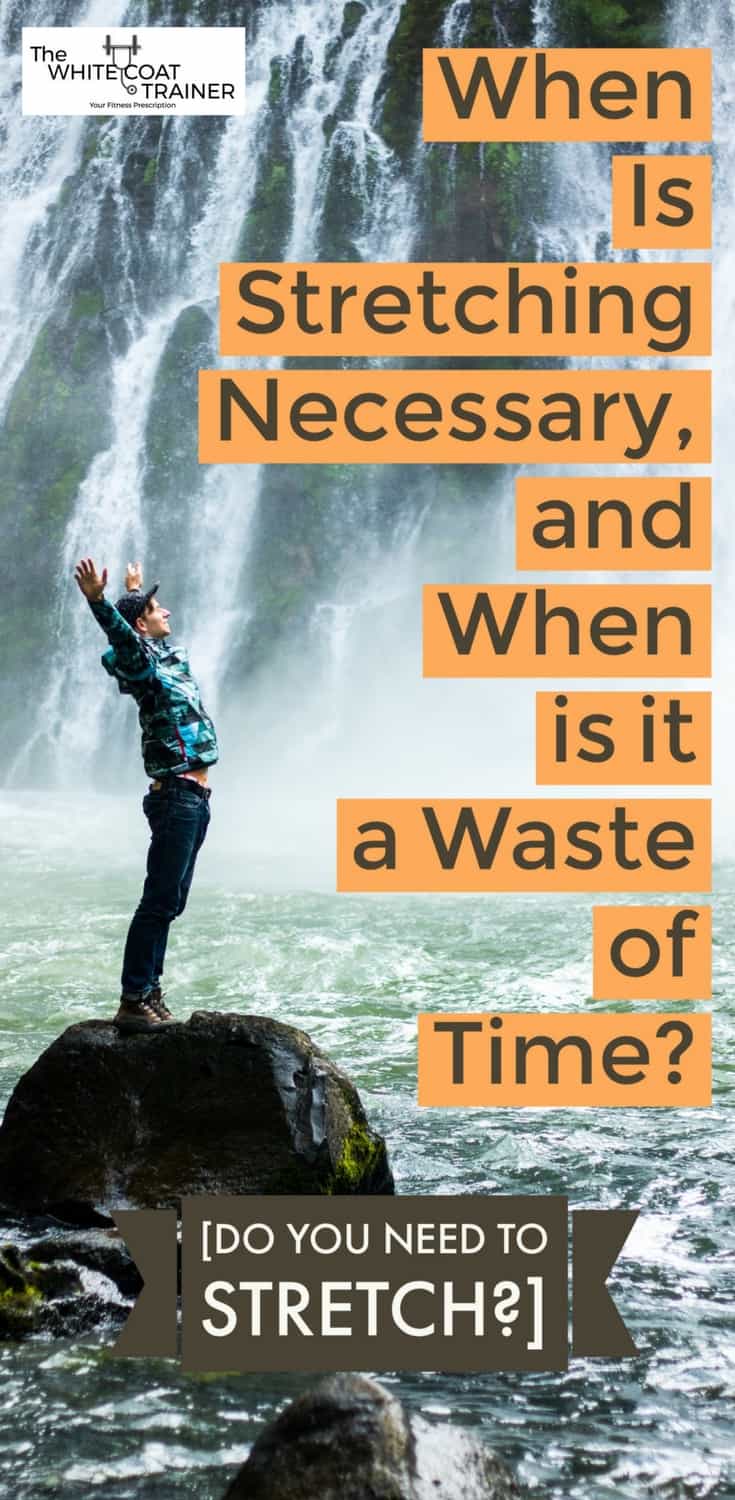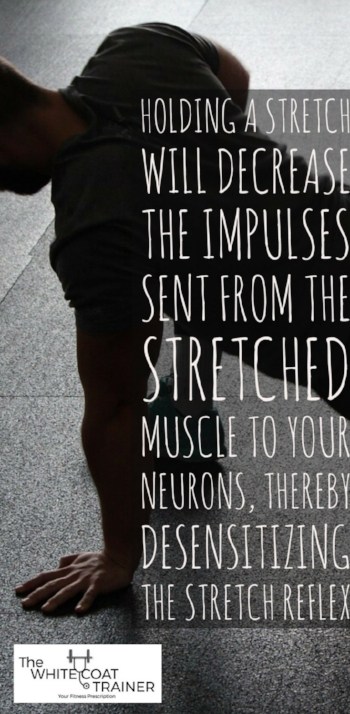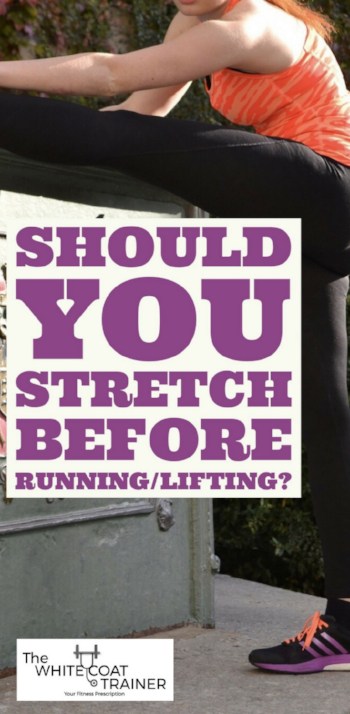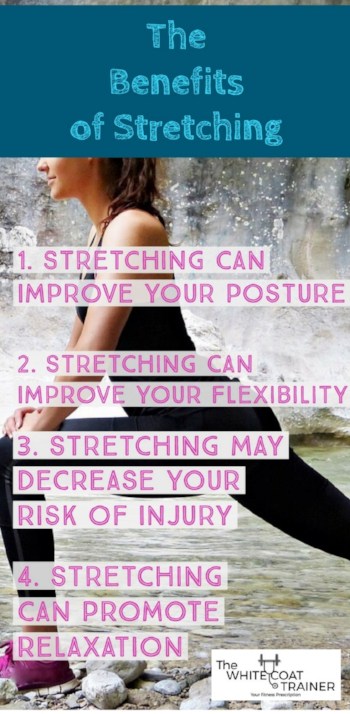Everyone has stretched at some point in their lives.
Maybe you do it regularly. Or maybe you haven’t stretched in years.
As you already know, some people are much more flexible than others. Can you bend down and touch your toes? Does it matter?

Is stretching necessary?
Welcome to the WCT Stretching Series, where we examine the questions surrounding the ever so popular practice of stretching.
In today’s post, we are going to cover
- Who Needs To Stretch and Who Doesn’t Need To Stretch
- The Difference Between Stretching for Mobility and Stretching for Flexibility
- What Stretching Is and What Happens When You Stretch Your Muscles
- When Is Stretching Good For You? When Is It Bad For You?
- When Is The Best Time To Stretch?
Sit back and enjoy the read.
Do I Need To Stretch?
So, does everyone need to stretch?
No. Stretching is necessary if you do not have the mobility to achieve a desired end range of motion because you lack the flexibility to do it.
For example, you may not be able to achieve a full squat position, and it may be because you lack flexibility in your hips or in or your ankles.
If you attempt to perform any compound exercise (such as squats or deadlifts) without adequate flexibility, you are significantly increasing your risk of injury!
On the other hand, if you do not have the mobility to achieve a desired end range of motion, but you have the flexibility to do it, then you need to work more on dynamic stretching or mobility drills to achieve those ranges of motion, rather than static stretching.
So in other words, if you have the mobility to achieve whatever position you want without putting your joints in a sub-optimal or even dangerous position, then you do not need to stretch.
So this begs the question, what is the difference between flexibility and mobility?
What Is The Difference Between Flexibility And Mobility?
In order to determine if you need to stretch or not, we must discuss the difference between flexibility and mobility.
People often use the terms flexibility and mobility interchangeably. There is a difference.
Flexibility is the amount of passive range of motion you have.
In other words, how much range of motion does that particular joint have when isolated.
Imagine you are at a physical therapist’s office, and they lay you flat on your back. They then bring one leg up all the way to your chest with your knee straight.
This is your passive range of motion because your joint is being put in motion by someone else. Â This is useful because it isolates the joint to determine how far that joint is actually able to move.
Mobility is the amount of active range of motion you have
In other words, mobility is how much range of motion you have when you are actually moving into the desired range of position.
Active range of motion helps us determine how much of that passive range of motion you can actually use in the real world.
Using the same example as above, you may be able to bring your leg up to your chest passively at the therapist’s office, but when you stand up and try to achieve the same position against gravity, you may notice that you are restricted by tight back muscles or tight hips, etc.
The limitations of your flexibility can be structural, while the limitations of your mobility may be positional.
So as you can see, stretching every single joint in every single person is a waste of time. Depending on your restrictions, the treatment will be different.
Keep in mind that you may only notice slight improvements in your passive range of motion, as your particular anatomy may prevent you from achieving certain ranges of motion.
(I.e. not everyone will be super mobile, no matter how much you stretch.)
If you do not have enough mobility to perform all of the fundamental human movement patterns, then you need to stretch in some way or another.
What are the fundamental human movement patterns? Check out Part 2, How Flexible Are You? 5 Useful Ways To Test If You Need To Stretch to find out.
To recap:
- You should stretch if you lack the flexibility to achieve a desired range of motion (such as a full range squat)
- Flexibility refers to how much passive range of motion you have
- Mobility refers to how much active range of motion you have
- If you possess the adequate flexibility to perform the desired range of motion but don’t have the mobility to do it, then you need to perform mobility drills and dynamic stretching.
Now, we will talk about what stretching is, and what happens if you stretch too much.
What Happens When You Stretch Your Muscles
So what is stretching?
Stretching is the process that occurs when you take your muscles and joints to their end range of motion and maintain that position in an effort to increase that particular range of motion.

When the muscle fibers are pulled to their full length, they send signals to the spinal cord to undergo a ‘stretch reflex.’
This reflex causes the muscle to contract forcefully and whip back into the un-stretched position forcefully.
This is what happens when you jump or squat. The muscles of your hips and hamstrings get stretched, resulting in a contraction reflex to propel you upwards.
Whenever you stretch, you are forcefully holding the position at the end range of motion. As a result, the muscles will become accustomed to the lengthened position and decrease its signal to the spinal cord.
Over time, your body will accept the lengthened position as a new baseline, thus increasing your flexibility.
As you could imagine, the stretch reflex is a built-in mechanism that protects us from injury.
Everything does come with a price. Is it possible to stretch too much?
Is Stretching Bad For You?
So if the purpose of stretching is to improve our passive and active range of motion, is there a point when stretching is not useful?
As with all things in life, it depends.
Some people stretch way too much. First, let’s analyze the most common reasons why people stretch in the first place.
- It feels good
- It helps fix “tweaked” muscles
- It will prevent injuries
- It serves as an excellent warm up prior to exercise
Let’s go over each one individually.
1) Stretching Feels Good
I guess there’s no argument here. Stretching does feel good. But besides that, it is questionable and even unlikely that stretching does any of the other 3 bullet points.
2) Does Stretching Help Fix A Sore Or Tweaked Muscle?
Stretching will not improve a sore or injured muscle. In fact, stretching can actually do the complete opposite and cause further damage to compromised muscle tissue.
When a muscle becomes pulled or strained, it contracts for a reason.
The same way we re-approximate the skin and almost every other organ during surgery, tissues needs to come together to repair themselves. Stretching a tweaked muscle can interrupt this healing process, and cause further damage.
A good rule of thumb is: If the muscle you are stretching is painful, then you should not be stretching it!
3) Does Stretching Prevent Injuries?
Stretching by itself does not prevent injuries. Injuries occur when your body experiences an external force while in a sub-optimal position.
Common examples include picking up a heavy object with poor spinal mechanics or pivoting on your knee when your joints aren’t aligned properly.
No amount of stretching will change an unfortunate event such as these.
If you cannot achieve the desired position due to limitations in your mobility, then stretching can potentially help you prevent injuries simply by aligning your joints properly.
4) Should I Stretch Before Lifting/Running?
When people ask this question, they are generally referring to static stretching. The kind where you hold a fixed position for 20 seconds or so.
The most common example is when you bring your heel to your butt and hold this position to stretch your quads, or when you place your outstretched leg on top of a ledge to stretch your hamstrings.
How many of you do this before a run?

Contrary to popular belief, there is no evidence that static stretching before physical activity is necessary.
In fact, some studies have shown that it can decrease a muscle’s power production if done before a lifting session.
Instead, it is more beneficial to perform dynamic stretching before any type of physical activity.
Dynamic stretching requires you to oscillate in and out of end ranges of motion to help improve your mobility in certain movement patterns. We go over this in more detail in A Simplistic 5-Minute Warm Up Routine To Keep You Limber.
So, stretching isn’t necessarily bad for you- the problem is that we are using stretching for the wrong reasons.
Let’s discuss what it’s actually good for.
The Benefits Of Stretching
When used correctly, stretching has plenty of benefits. These include:
Stretching can improve your posture:
The vast majority of the population has bad posture. This is usually secondary to prolonged sitting, excessive use of computers and cell phones and a lack of exercise. Check out You Probably Have Bad Posture- Here’s How to Tell to learn more.
Stretching can improve your flexibility:
If you lack a specific end range of motion, stretching can help you gain an appreciable increase in flexibility. Again, some people are naturally more flexible than others. If you feel pain, then don’t stretch that area.
Stretching can decrease your risk of injury IF you have mobility issues:
Remember, stretching by itself is not going to prevent you from having injuries. Stretching can help improve your mechanics by helping to align your joints properly.
Stretching can promote relaxation:
The breathing techniques that are necessary during stretching help you relieve stress and become relaxed. Deep breathing has been shown to help activate the parasympathetic nervous system to promote rest.
Sometimes, people incorporate stretching into their nightly routine to help them fall asleep, like the ones we discussed in 7 More Ways To Increase Deep Sleep [Even With A Busy Schedule]

When Is The Best Time To Stretch?
If you are someone who absolutely loves static stretching, then keep on doing it. Just make sure that you are doing it at the right time.
The best time to perform static stretching is AFTER your workout when your muscles and joints are already loose/warm or after a warm shower right before bedtime.
(BTW, do you need an awesome workout? Check out The Best Workout Template For Busy Professionals)
The Bottom Line On Stretching Vs Not Stretching
We are all human beings who need to move in space.
Some do it more graciously than others.
It is important to know if you possess the ability to achieve all of the functional human movement patterns with proper technique. If you don’t it may be due to a lack of flexibility or mobility in one or more particular joints.
If this is the case, then you will benefit from performing a dedicated stretching routine.
Performing basic human movements with sub-optimal form will increase your risk of pain, injury, and having to pay an orthopedic surgeon the big bucks to get you back to normal.
In the next article, we will go over how to determine if you have adequate mobility or not. You can find it at How Flexible Are You? 5 Useful Ways To Test If You Need To Stretch.
Then in Part 3, 9 Incredible Stretches To Improve Your Flexibility Fast, we go over some of the highest yield stretches to improve the flexibility of the most common problem areas.
Now we turn it over to you
How often do you stretch?
Do you stretch before or after your workout?
Are you naturally flexible?
Comment below and let us know.

Alex Robles, MD, CPT / Brittany Robles, MD, MPH, CPT
Alex & Brittany Robles are physicians, NASM Certified Personal Trainers, and founders of The White Coat Trainer: a resource dedicated to improving the health and fitness of busy professionals using time-efficient strategies. Their advice has been featured in My Fitness Pal, Prevention, Livestrong, Reader’s Digest, Bustle, The Active Times, and more. Learn more about them here.

Great discussion.
Something we should be spending more time talking about, some people are spending their valuable time stretching when it may not be what they need.
I recently wrote a blog exploring this idea. Check it out and let me know your thoughts
https://www.acaciaosteopathy.com.au/blog-darwin-osteopath/isstretchinghelpingyou
Kind Regards